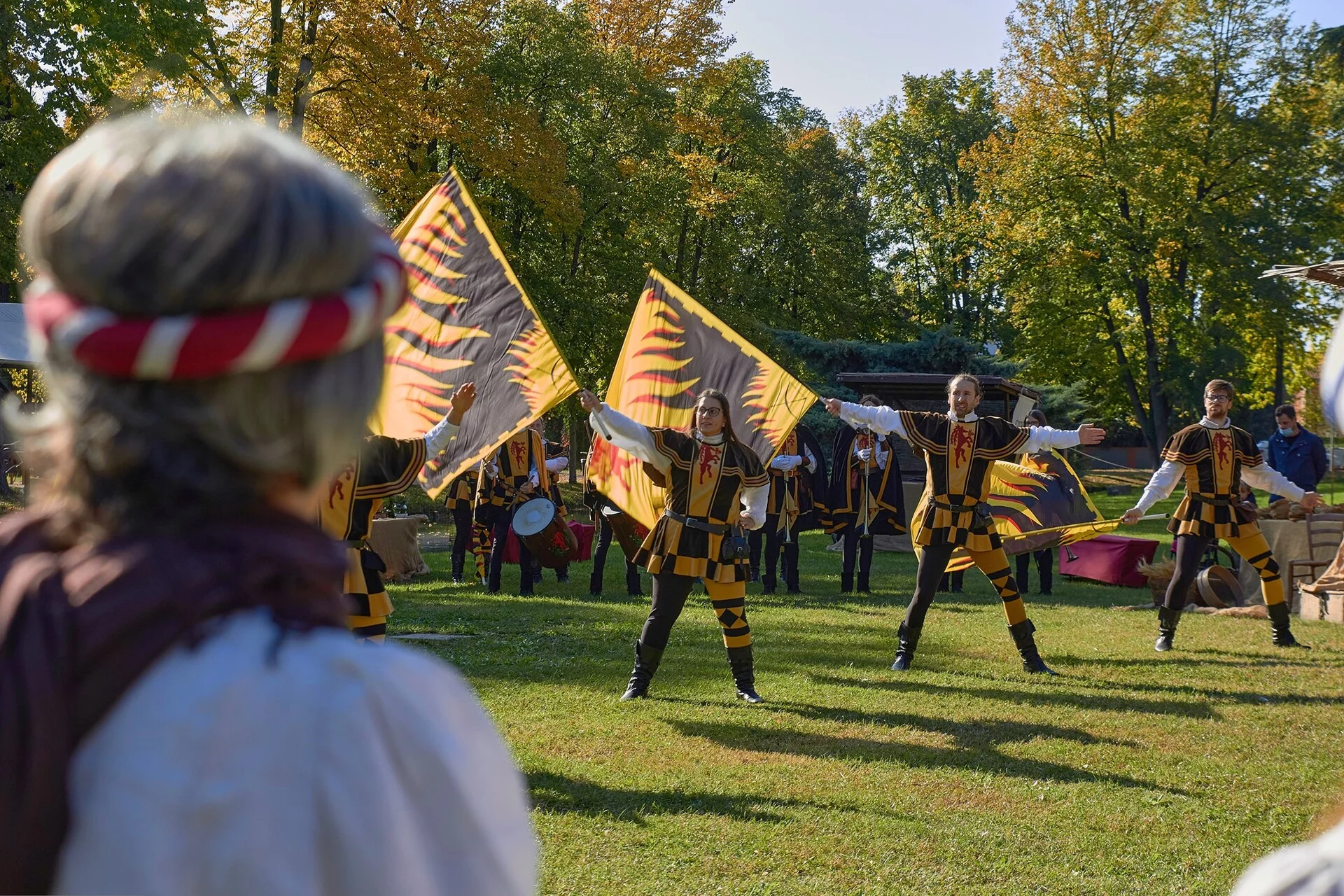
The event recalls the ancient Palio held by the Lords Tempesta in their castle of Noale in the 14th century. Throughout the Middle Ages, the inhabitants of the various districts and villages that developed outside the castle during the rule of the Tempesta family rushed to see the festivals and tournaments that took place in the square inside the castle walls. Right from the rediscovery of these ancient documents, in 1997, on the initiative of Pro Loco, the town of Noale, during the month of June, revived the medieval festival.
The ancient Palio provided for a race sometimes pedestrian and sometimes equestrian whose prize consisted, for the first arrived, of a velvet cloth or a sum of money, while the last arrived had the shame of being stained on the face with black or charcoal. The party usually opened with the parade of competitors, who then gave life to the real race running on foot, on horseback, fighting, blowing and throwing poles depending on the different types of Palio. Today's Palio consists of a race on foot that takes place along a route of about 800 meters to be repeated twice with the formula of the men-women relay and in which the runners of the seven districts of Noale participate: Bastia, Cerva, Drago, Gato, S. Giorgio, S. Giovanni and S. Urbano.
Visitors are immersed in an atmosphere of bygone times and, in addition to the race, attend various moments and activities characteristic of the Palio: the historical procession, the ceremony of the Golden Bull, the fire, court shows with jugglers, fire eaters, duelists, falconers, musicians, flag-wielders and theatre performers, all taking place within the evocative setting of the medieval market.
One of the most evocative moments of the rich programme of the medieval festival is the "Bala d'Oro", a ceremony in which the protagonists are the diociottenni Noalesi engaged in the extraction of wooden spheres containing the so-called "bale d'oro". Historically, the girls took part in an extraction where only one sphere contained twelve gold ducats, donated by the Noalese Hospital of the Battuti Friars as a dowry.